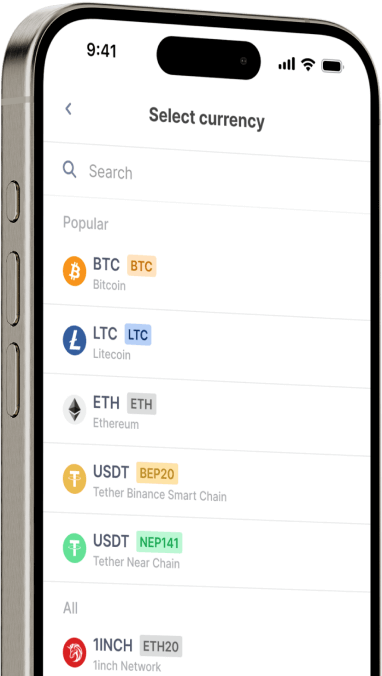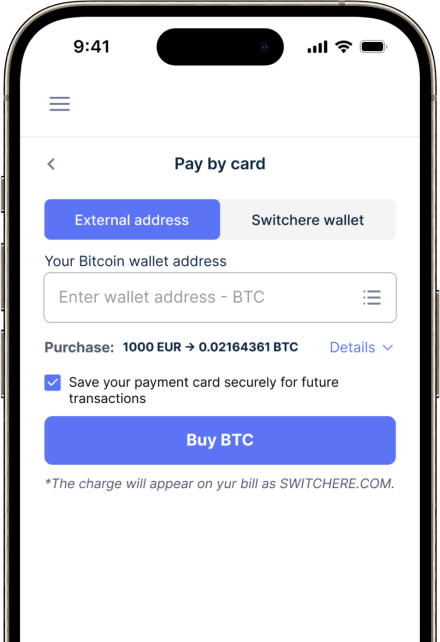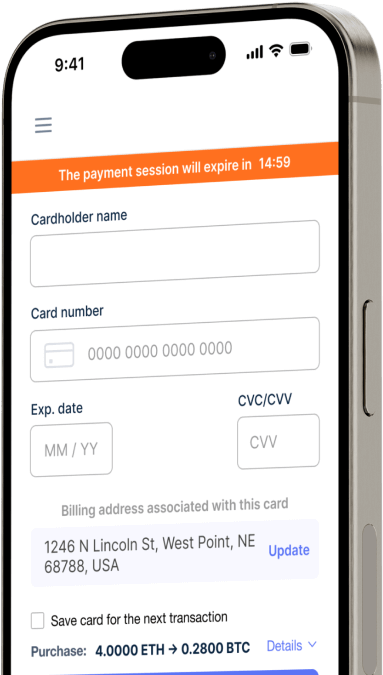Dönüştürmek
Norwegian Krone (NOK)'dan Aave (AAVE)'ye aniden
Switchere'de Aave (AAVE) ile kolayca Norwegian Krone (NOK) satın alın ve hızlı, güvenli işlemlerden yararlanın.
Hakkında
Aave (AAVE)
Aave (AAVE), açık kaynaklı, gözetimsiz bir likidite piyasası olarak işleyen, önde gelen bir merkezi olmayan finans (DeFi) protokolüdür. Birincil amacı, kullanıcıların aracılar olmadan çeşitli dijital varlıkları ödünç vermelerini ve almalarını sağlamaktır. Platform, başta Ethereum olmak üzere blok zinciri teknolojisi üzerinde sofistike akıllı sözleşmelerden yararlanıyor, ancak DeFi uygulamalarını geliştirerek erişimini birden fazla zincire genişletti. Aave likidite havuzlarına varlık sağlayan kullanıcılar, faiz yoluyla pasif gelir elde ederek karşılığında yatırdıkları sermayeyi ve tahakkuk eden faizi temsil eden faizli aToken'lar alır. Öte yandan borçlular, geliştiriciler için benzersiz bir özellik olan aşırı teminatlı krediler veya yenilikçi düşük teminatlı "flaş krediler" alabilirler.
Aave'nin temel teknolojisi, güvenli ve şeffaf zincir içi işlemleri kolaylaştıran sağlam akıllı sözleşme mimarisine dayanmaktadır. Temel ayırt edici özellikleri arasında, piyasa koşullarına ve risk iştahına bağlı olarak kullanıcılara esneklik sunan değişken ve sabit faiz oranlarını desteklemesi yer almaktadır. Yerel AAVE tokenı, bu merkezi olmayan ağ içinde önemli işlevlere hizmet eder. Aave ekosisteminin geleceğini şekillendirerek, sahiplerine protokol yükseltmeleri ve parametre değişiklikleri için oy kullanma yetkisi veren bir yönetişim belirteci görevi görür. Ayrıca, AAVE protokolün Güvenlik Modülünde stake edilebilir, kriptografik güvenliğine katkıda bulunur ve stake edenlerin ödüller kazandığı bir sigorta desteği sağlar. Aave, temel para piyasası hizmetleri sağlayan Web3 altyapısının temel taşıdır.
Diğer 150+ Kripto Para Birimlerini Norwegian Krone (NOK) karşılığında satın alın
Norwegian Krone (NOK) için Diğer Madeni Paralar
-
NOK için ZRX
-
NOK için 1INCH
-
NOK için AAVE
-
NOK için ACH
-
NOK için ALGO
-
NOK için TLM
-
NOK için ANKR
-
NOK için APE
-
NOK için NFT
-
NOK için API3
-
NOK için APT
-
NOK için ARPA
-
NOK için AUDIO
-
NOK için AVAX
-
NOK için AVAX
-
NOK için AXS
-
NOK için BADGER
-
NOK için BAL
-
NOK için BNT
-
NOK için BAT
-
NOK için BNB
-
NOK için BSW
-
NOK için BSV
-
NOK için BLUR
-
NOK için BONE
-
NOK için CTSI
-
NOK için CELR
-
NOK için CELO
-
NOK için CEL
-
NOK için LINK
-
NOK için CHZ
-
NOK için CHR
-
NOK için C98
-
NOK için COMP
-
NOK için CFX
-
NOK için PEOPLE
-
NOK için CVX
-
NOK için ATOM
-
NOK için CTC
-
NOK için CRV
-
NOK için DAI
-
NOK için DASH
-
NOK için MANA
-
NOK için DENT
-
NOK için DGB
-
NOK için DYDX
-
NOK için XEC
-
NOK için EOS
-
NOK için ETC
-
NOK için ENS
-
NOK için ETHW
-
NOK için FET
-
NOK için FIL
-
NOK için FLOKI
-
NOK için GALA
-
NOK için GNO
-
NOK için ONE
-
NOK için HBAR
-
NOK için HOT
-
NOK için HOOK
-
NOK için ICX
-
NOK için ILV
-
NOK için IMX
-
NOK için INJ
-
NOK için ICP
-
NOK için IOST
-
NOK için IOTX
-
NOK için JASMY
-
NOK için JST
-
NOK için KAVA
-
NOK için KCS
-
NOK için KSM
-
NOK için KNC
-
NOK için LDO
-
NOK için LQTY
-
NOK için LPT
-
NOK için LOOKS
-
NOK için LRC
-
NOK için LUNA
-
NOK için MKR
-
NOK için MASK
-
NOK için EGLD
-
NOK için ALICE
-
NOK için NEAR
-
NOK için XEM
-
NOK için NEXO
-
NOK için NOT
-
NOK için NMR
-
NOK için OKB
-
NOK için OMG
-
NOK için ONT
-
NOK için EDU
-
NOK için OP
-
NOK için OGN
-
NOK için CAKE
-
NOK için PAXG
-
NOK için PENDLE
-
NOK için DOT
-
NOK için POL
-
NOK için QTUM
-
NOK için QNT
-
NOK için RDNT
-
NOK için XRD
-
NOK için RVN
-
NOK için REN
-
NOK için RSR
-
NOK için RLC
-
NOK için RPL
-
NOK için SFP
-
NOK için SHIB
-
NOK için SKL
-
NOK için SXP
-
NOK için STND
-
NOK için STG
-
NOK için XLM
-
NOK için GMT
-
NOK için STORJ
-
NOK için STMX
-
NOK için SUSHI
-
NOK için SNX
-
NOK için USDT (Polygon)
-
NOK için USDT (AVAC)
-
NOK için USDT (BEP20)
-
NOK için USDT (ERC20)
-
NOK için USDT (SPL)
-
NOK için USDT (NEP141)
-
NOK için USDT (FA2)
-
NOK için USDT (TRC20)
-
NOK için USDT (JETTON)
-
NOK için XTZ
-
NOK için GRT
-
NOK için SAND
-
NOK için TFUEL
-
NOK için THETA
-
NOK için RUNE
-
NOK için TON
-
NOK için TUSD (BEP20)
-
NOK için TUSD (TRC20)
-
NOK için TWT
-
NOK için UOS
-
NOK için UMA
-
NOK için UNI
-
NOK için USDC (Polygon)
-
NOK için USDC (SPL)
-
NOK için USDC (OP)
-
NOK için USDC (BEP20)
-
NOK için USDC (AVAC)
-
NOK için USDC (ARB)
-
NOK için USDC (ERC20)
-
NOK için VET
-
NOK için VRA
-
NOK için WAXP
-
NOK için WOO
-
NOK için WLD
-
NOK için WBTC
-
NOK için WMINIMA
-
NOK için XDC
-
NOK için YFI
-
NOK için YGG
-
NOK için ZIL
Aave (AAVE) Nasıl Satın Alınır
Sıkça Sorulan Sorular
-
Norveç Kronu (NOK) ile Aave (AAVE) satın almanın en yaygın yolu nedir?
En yaygın yöntem, NOK için bir fiat on-ramp görevi gören düzenlenmiş bir kripto para borsası kullanmaktır. Kullanıcılar genellikle yerel bir banka havalesi veya Vipps aracılığıyla NOK yatırır, KYC/AML doğrulamasını tamamlar ve ardından BTC veya ETH gibi büyük bir kripto para birimi satın alır. Daha sonra, bu varlığı borsanın AAVE/BTC veya AAVE/ETH piyasasında AAVE ile takas ederler.
-
NOK ile AAVE satın aldıktan sonra, AAVE tokeninin birincil kullanım alanları nelerdir?
AAVE tokeninin ekosistemi içinde iki ana faydası vardır. İlk olarak, protokolün geleceğini şekillendiren Aave İyileştirme Önerileri (AIP'ler) üzerinde oy kullanma imkanı sunan bir yönetişim tokeni olarak hizmet eder. İkinci olarak, AAVE, protokolün Güvenlik Modülünde stake edilebilir; burada stakerlar bir eksiklik durumunda bir geri çekilme mekanizması olarak hareket eder ve karşılığında stake ödülleri ve protokol ücretlerinin bir yüzdesini kazanırlar.
-
Doğrudan NOK/AAVE işlem çiftleri var mı, yoksa çok adımlı bir işlem mi yapmam gerekiyor?
Doğrudan NOK/AAVE işlem çiftleri son derece nadirdir. Standart prosedür çok adımlı bir işlem içerir. İlk olarak, NOK'u Bitcoin (BTC), Ethereum (ETH) gibi yüksek likiditeli bir temel kripto para birimine veya USDC gibi bir stabilcoine dönüştürmek için bir fiat ağ geçidi kullanırsınız. Ardından, bu temel varlığı, ilgili bir çifti listeleyen bir borsada (ör. AAVE/BTC, AAVE/ETH) AAVE ile takas etmek için kullanırsınız. Kaymayı en aza indirmek için seçtiğiniz çiftin emir defteri likiditesini her zaman kontrol edin.
-
Aave Protokolü, merkeziyetsiz finansta (DeFi) hangi temel rolü oynamaktadır?
Aave, önde gelen merkeziyetsiz, gözetimsiz bir likidite protokolüdür. Temel işlevi, kullanıcıların tedarikçi veya borçlu olarak katılmasına olanak tanımaktır. Tedarikçiler pasif bir gelir elde etmek için piyasaya likidite sağlarken, borçlular varlıkları aşırı teminatlandırılmış bir şekilde borç alabilirler. Bu borç verme ve alma mekanizması, daha geniş DeFi ekosisteminin bir temel taşıdır.
-
'aToken'ler nedir ve Aave Protokolü'ne likidite sağlamakla nasıl bir ilişkileri vardır?
Bir Aave likidite havuzuna dijital bir varlık yatırdığınızda, temel varlığın değerine 1:1 oranında sabitlenmiş faiz getiren tokenler olan 'aToken'lerin eşdeğer bir miktarını alırsınız. Örneğin, DAI yatırmak aDAI basacaktır. Bu aTokenler, cüzdanınızda gerçek zamanlı olarak faiz biriktirir ve likidite havuzu üzerindeki hak talebinizi temsil eder. Bunlar, bir likidite sağlayıcısı olarak getiri elde etmenin teknik mekanizmasıdır.
-
NOK'u AAVE'ye dönüştürürken ve dijital varlığı saklarken hangi güvenlik uygulamaları esastır?
Her zaman güçlü KYC/AML uyumluluğunu uygulayan saygın, düzenlenmiş kripto para borsalarını kullanın. Borsa hesabınızda iki faktörlü kimlik doğrulamayı (2FA) etkinleştirin. AAVE satın aldıktan sonra, tokenlarınızı borsadan özel anahtarları kontrol ettiğiniz kişisel, gözetimsiz bir dijital cüzdana aktarmanız şiddetle tavsiye edilir. Önemli miktarlar için, bir donanım cüzdanı çevrimiçi tehditlere karşı en yüksek düzeyde güvenlik sağlar.




